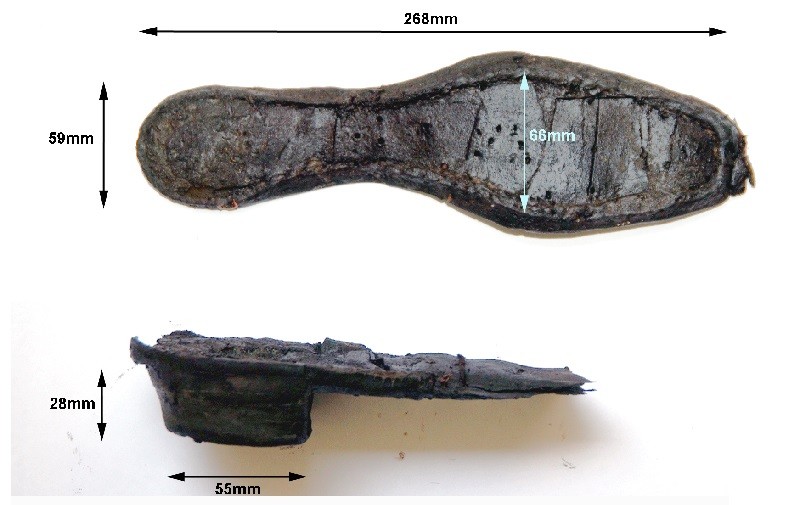19th century leather boot sole from Rosia Bay

19th century leather boot sole from Rosia Bay
Local divers found this leather boot sole buried in the seabed sediments off Rosia Bay in 2004 and presented it to the Gibraltar National Museum’s Underwater Research Unit. The absence of oxygen has helped to preserve this artefact, which on dry land would have disappeared after just a few years, making it a very rare find. This artefact is currently on display at the Gibraltar National Museum.
The leather is thick and robust with the heel made up of several thick layers of leather nailed together. The state of preservation is so good that even some of the fragments of the waxed linen thread used to sew the shoe together is still in place. Specialists have also established that the shoe had been repaired at least once, as the remains of the nails used to hold in place the new sole, after the worn one had been cut away, can be seen in front of the waist of the shoe.
In the early 1800s, the ideal foot was a narrow elegant foot and shoes were made narrow to enhance this classic model – hence the length and apparent narrowness of this shoe which was made in the 1820s or slightly later. It is calculated that it is about a modern size 7 and has an equivalent of a C or D width fitting, so it is likely that it would have been worn by a youth. It is even possible that more information about the wearer may be determined, as the impression of the foot can still be seen on the leather!
This all suggests that the shoe may have come from an officer serving on board one of the ships using the anchorage off Rosia Bay in the early 19th century not long after the death of Nelson. Certainly because the shoemaking is of good quality, it would have been worn by an officer who would have been able to dress fashionably.
After being in the sea for close to two centuries, the artefact required careful conservation. This included undergoing a process of desalination to remove all chloride ions. The water within the leather was then replaced with glycerol to prevent the cells collapsing and the leather becoming hard, before finally freeze drying it.
Published: February 08, 2021
Other similar VM - Archaeology
18-20 Bomb House Lane
PO Box 939,
Gibraltar
